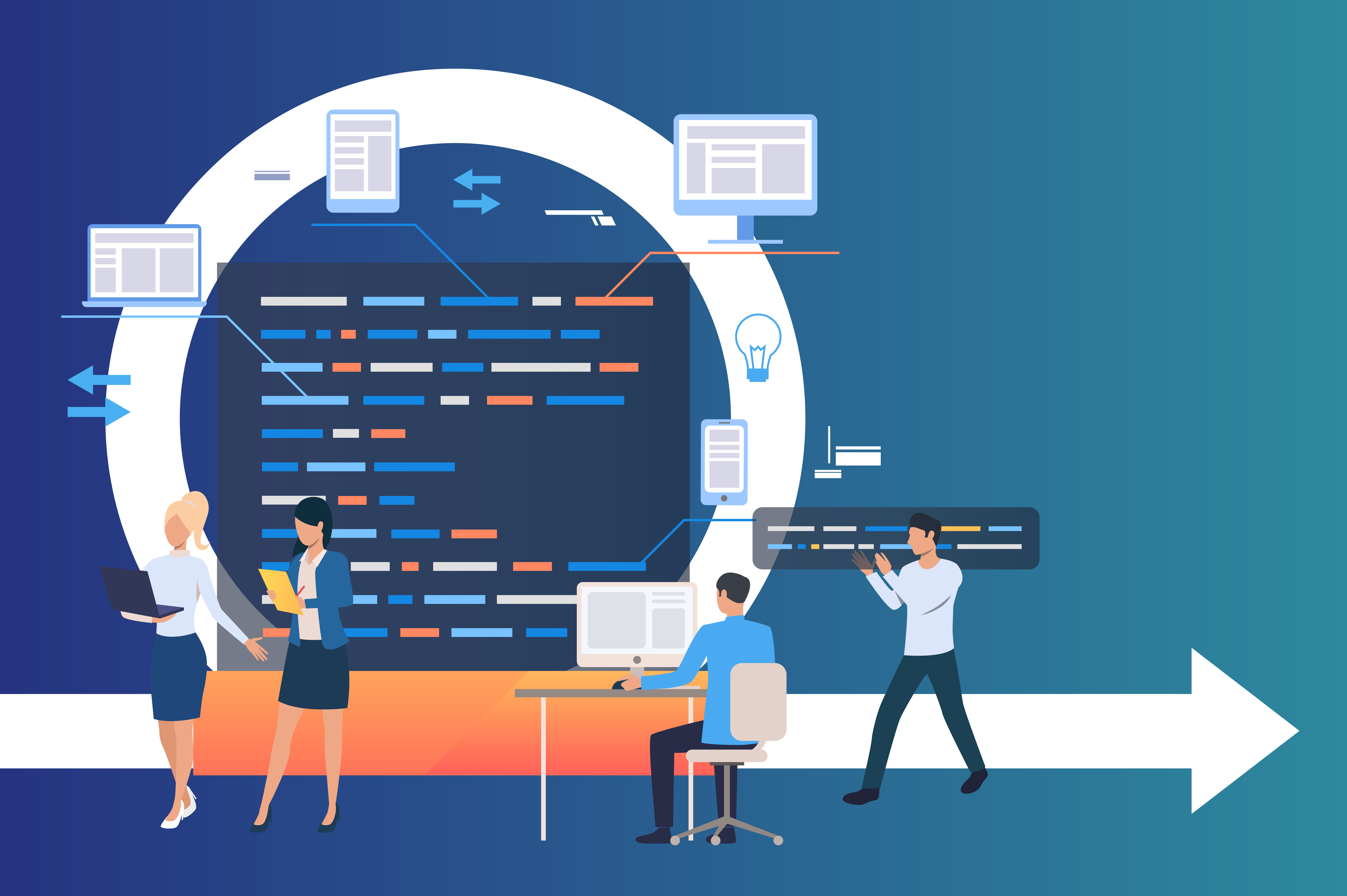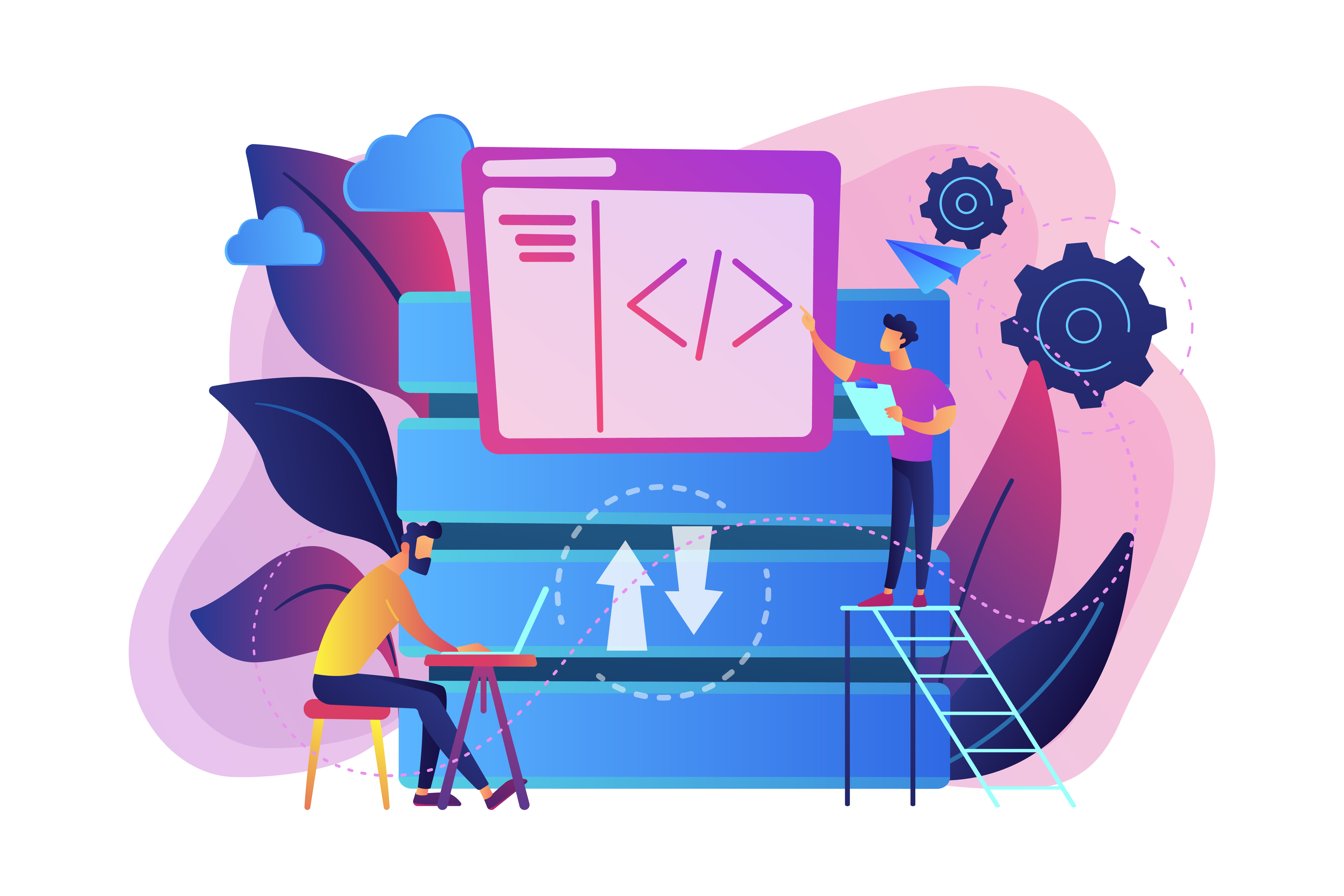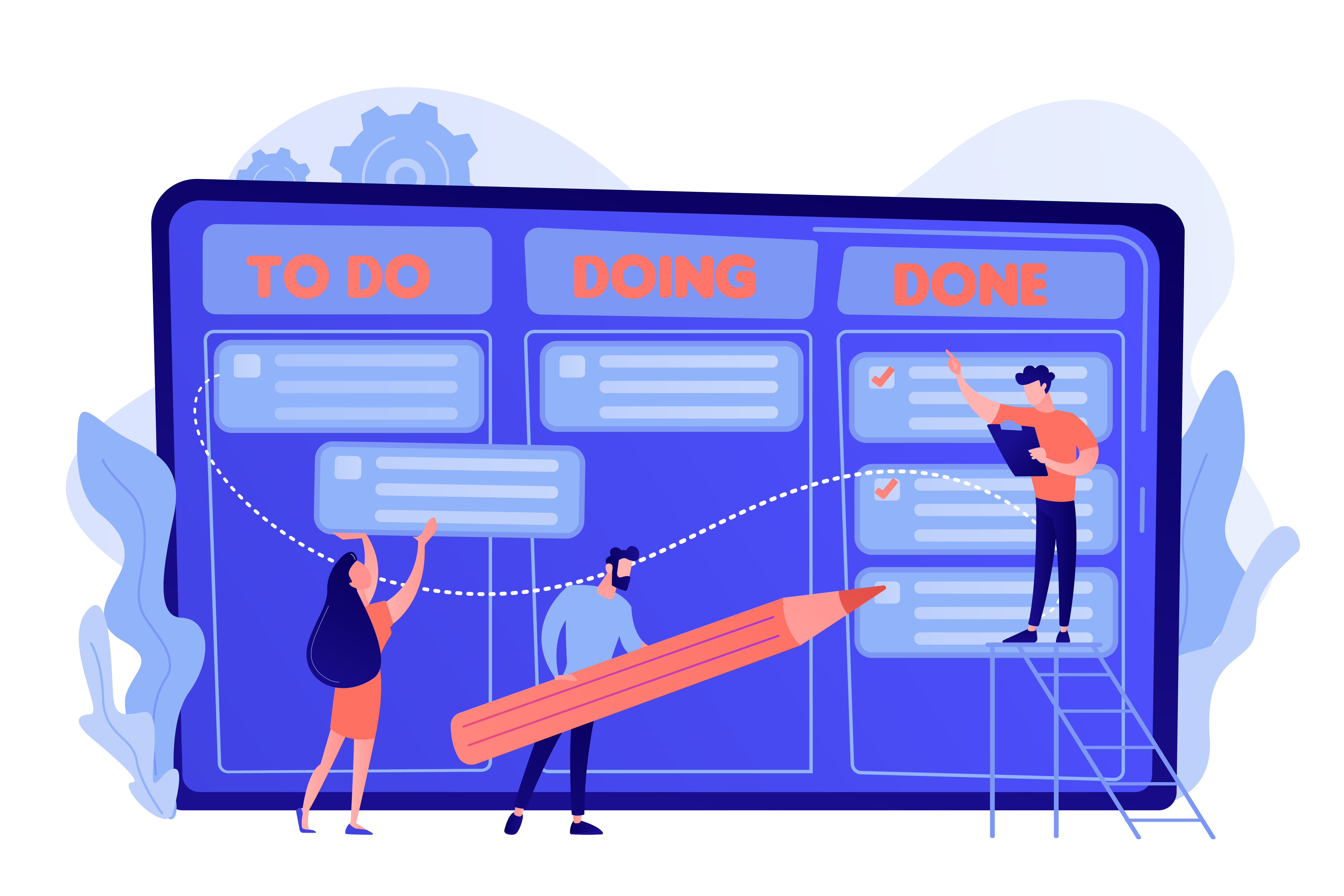A backend developer is someone who builds and maintains the parts of a website or app that you don’t see. Back-end development is the part of web building that handles what happens on the server side. It uses tools like databases, server code, and frameworks to run all this. A good backend setup keeps websites stable, responsive, and secure. Even if users never see it, it’s what makes everything tick.

Skills for Becoming a Backend Developer
If you want to be a backend developer, you’ll need to know what back-end engineering is and build a strong base of technical and thinking skills. You don’t have to know everything from day one, but it helps to understand what this job actually needs.
1. Programming Languages
You can’t be a backend developer without knowing at least one programming language. The most common ones are:
- Python,
- Java,
- PHP,
- Ruby,
- Node.js (JavaScript).
These languages are used to write the logic that runs in the background of websites or apps.
For example, when you send a form or click a login button, a backend script takes that info and checks it in the database. This is where the code does the hard work. Python is popular for being simple and easy to read. Java is used a lot in bigger systems. PHP works well with WordPress and many content sites.
One language is enough to start with. Over time, you’ll probably learn more. But the main point is—if you can’t talk to the computer, you can’t build the backend.
2. Working with Databases
Every backend system uses some kind of database. That’s where user info, product details, and other saved data live. Basic backend developer skills include knowing how to connect your app to a database and manage it.
There are two kinds: SQL (like MySQL or PostgreSQL) and NoSQL (like MongoDB). SQL databases use tables. NoSQL uses a more flexible style, like storing data in boxes. Knowing how to write queries, add or remove info, and avoid mistakes like duplicates or missing entries is a must. If your app can’t save or load the right data, users will get errors—or worse, lose info.
3. Understanding APIs
An API lets two apps or systems talk to each other. Let’s say your site uses Google Maps or collects weather updates. That’s an API at work. As a backend engineer, you often write your own APIs so that the front-end can fetch or send information to the backend.
This skill shows up in almost every real job. If your backend can’t offer info clearly to other parts of the app, nothing works. It’s like trying to talk to someone who speaks a different language, with no translator. So, you need to know how to create, read, and use APIs. It’s one of the key backend engineer skills that helps connect different parts of the system.

4. Server and Hosting Basics
Backend code doesn’t run in the air. It needs a place to live. That place is a server. You don’t have to be a server expert, but knowing how to set up a basic one, deploy your code, and keep it running matters.
If your site gets lots of visitors, the server might slow down. If your app crashes, you should know how to restart it or check the logs. Services like AWS, DigitalOcean, or even Heroku help with hosting. But you still need to understand what’s going on in the background. Knowing this makes it easier to build projects that don’t break when people use them.
5. Security Knowledge
A backend developer is responsible for handling private stuff, like passwords, payment info, or personal data. So, you need to keep that safe. This means you should know how to hash passwords, avoid SQL injection attacks, and check who can access what.
Even a small mistake in your code can open the door to hackers. That’s why this is one of the most important skills needed for backend developer roles. You don’t need to be a full-time security expert. But you do need to write code that doesn’t leak. If you’re not careful, users could lose trust, or your whole system could go down.
6. Version Control (Git)
Imagine working on a project and then making a change that breaks everything. If you don’t have version control, it’s hard to go back. Git lets you save changes, track what you did, and work with others without stepping on each other’s code.
GitHub or GitLab are popular tools that use Git. They’re used in most teams today. Learning how to make branches, push code, pull updates, and fix conflicts is part of being a real backend developer. This skill helps you work better, stay organized, and avoid major problems. It also shows others that you know how to work on serious projects.
7. Problem-Solving and Logic
Backend work isn’t just about writing code. It’s also about thinking. Sometimes, things go wrong, and there’s no clear answer. You’ll have to look through logs, test things step by step, and figure out where the issue is coming from. Maybe your database is slow. Maybe the API is down. Maybe your server crashed. You need the patience to test your code, fix bugs, and improve what you’ve built.
This is one of those backend engineer skills that grows with time. The more you practice, the better you get at thinking clearly when things break. And in backend work, things will break.
The path to becoming a backend developer isn’t a straight line. You’ll pick up some skills fast, while others take more time. But don’t stress. Start small, build something real, and keep going.

Backend Developer Roadmap in 2025
So, you want to be a backend developer in 2025? Good choice. It’s a job that’s always needed, and it lets you build things that power websites, apps, and tools people use every day. But where do you start? What do you need to learn, and in what order?
Step 1: Learn the Basics of the Web
Before you start writing server code, you should understand what a back-end developer does. A lot of people skip this part, but it helps more than you think. Start by learning how a website loads. What happens when someone types a URL and presses Enter? Learn what a client and a server are. Understand HTTP and how web browsers talk to servers.
Step 2: Pick a Programming Language
This is where the real backend developer career path begins. You need a language to write logic and connect your backend parts. In 2025, the top choices are Python, JavaScript (Node.js), PHP, Java, and Go.
Python is great for beginners. JavaScript (Node.js) is good if you also want to work on the front-end later. PHP is still big in content-based websites. Java and Go are used in bigger systems and apps.
Pick one and stick with it for a while. Don’t jump between languages too quickly. Build small projects. Write code that handles things like form submissions, simple login systems, or basic pages that load info from a database.
Step 3: Learn About Databases
Every backend needs a place to store and read data. That’s where databases come in. This is one of the most important parts of the backend engineering roadmap.
You’ll hear about SQL and NoSQL databases. SQL uses tables, like MySQL or PostgreSQL. NoSQL uses other formats, like MongoDB. Learn how to create tables or collections, add and update records, and make queries to get the info you need.
Step 4: Understand APIs and How to Build Them
This is where the backend starts to connect with the rest of the system. APIs let apps talk to each other. If you want the front-end to show something, it usually pulls it from your backend through an API.
Learn how to build simple APIs that let users get and send info. For example, you can make a to-do app with APIs to list tasks, add new ones, or mark them done. Also, learn how to connect to other APIs. Maybe use a weather API to show the temperature. This step helps you understand how apps share info in real life.
Step 5: Learn a Framework
Once you know the basics, you’ll want to move faster. That’s where frameworks come in. They save you time by giving structure to your code.
In Python, that’s usually Django or Flask. In Node.js, you can use Express. For PHP, Laravel is a good pick. These tools let you build apps quicker and make your code cleaner.
Start by building a blog or a small e-commerce site using a framework. Learn how to organize your files, set up routes, and connect to your database through the framework.

Step 6: Understand Hosting and Servers
Now it’s time to take your app live. This means learning how to run your code on a real server. You’ll need to understand what a server does and how to work with basic command-line tools.
You can use platforms like Heroku, Vercel, DigitalOcean, or AWS. Pick one that feels easy. Learn how to deploy your app, keep it running, and fix it if it crashes.
Step 7: Focus on Security
By now, you’re writing real code and building apps. But can people trust them? Security matters a lot in the backend developer career path. You’ll handle user info, passwords, maybe even payment details.
Start small. Learn how to hash passwords. Understand why you shouldn’t trust user input. Protect your APIs. Avoid storing sensitive data in plain text.
If you’re not careful here, it could cause big problems. You don’t need to be a security expert, but knowing the basics will help you build better, safer apps.
Step 8: Build Projects and Show Your Work
Learning is good, but building is better. Start putting everything together. Make projects that use all your skills—servers, databases, APIs, and security. You can build a task manager, a blog with user comments, or even a booking system. Anything that makes you think and lets you apply what you’ve learned is good.
Share your projects on GitHub. Write about them. Let people see what you can do. This helps a lot when you’re looking for jobs or freelance work.
Step 9: Keep Learning and Growing
Even after you’ve learned the main parts of the backend engineering roadmap, there’s always more to explore. You might look into caching, message queues, background jobs, or scaling your apps for more users. You don’t need to rush. Just keep building and solving problems. The more real work you do, the stronger your skills get. Over time, you’ll move from beginner to confident backend developer.
Many companies choose to outsource web development, so this job is in demand. The roadmap for backend developer success in 2025 is clear, but it’s not one-size-fits-all. Some people move fast, others take longer. That’s okay. What matters is steady progress.
Back to the top
The answers to your questions
What tools does a backend developer use?
A backend developer works with a mix of tools, depending on the project. This usually includes a programming language like Python or Node.js, a database system like PostgreSQL or MongoDB, and version control like Git. They also use frameworks (like Express or Django), text editors (like VS Code), and sometimes cloud platforms like AWS. The tools aren’t fixed—they just need to get the job done.
How long does it take to become a Backend Developer?
There’s no set time, but most people need at least 6–12 months of focused learning to get comfortable. That’s with steady practice and building real projects along the way. If you’re learning part-time, it might take longer—and that’s fine too. What matters is doing, not rushing.
What is the future of the backend developer?
Backend work isn’t going away. In fact, as more apps and services go online, the demand is growing. Some things may get automated, but businesses will still need people who can build smart systems and fix things when they break. If you're good at it, you’ll always find work.
Which programming languages should I learn for backend development?
You only need one to start, and then you can pick up more later. Python, JavaScript (Node.js), PHP, Java, and Go are solid picks. Each one has its strengths, depending on the project. Choose the one that feels right for you and just begin.
Which is the easiest backend language?
Most people say Python is the easiest. It has clear syntax and feels more like plain English. It’s great for beginners and still powerful enough for serious work. That said, “easy” depends on how you learn—so try a few and see what clicks.
